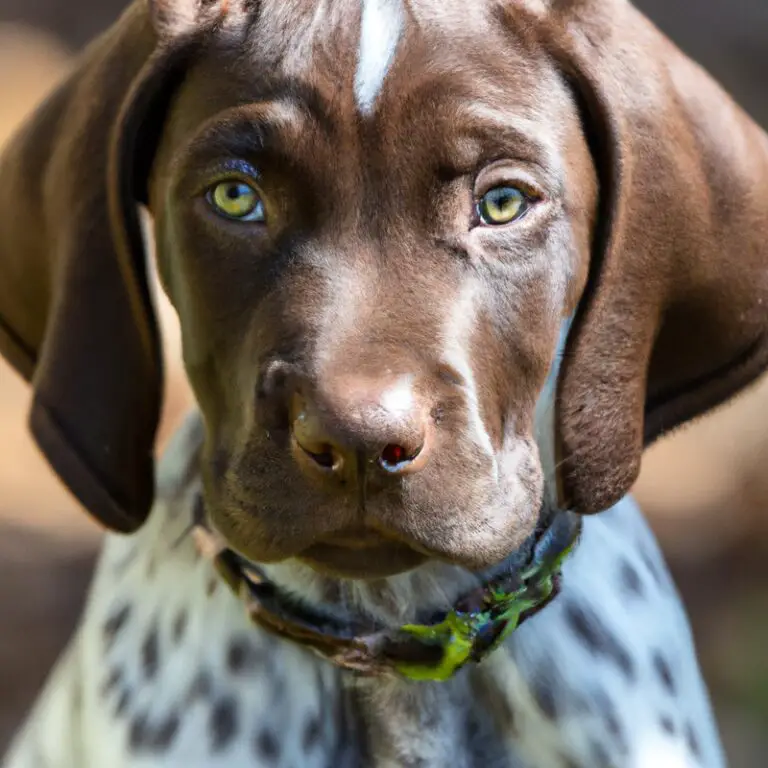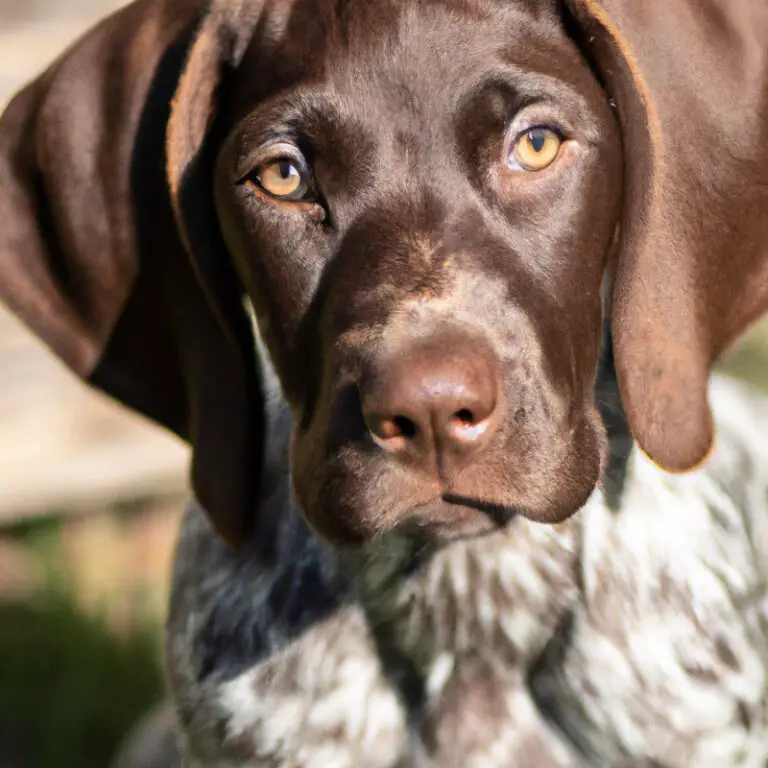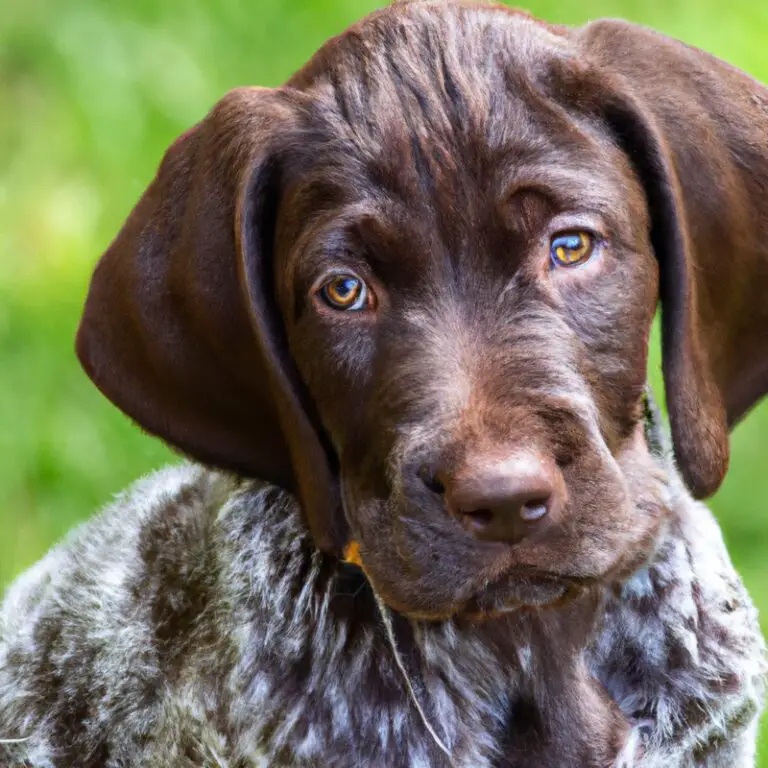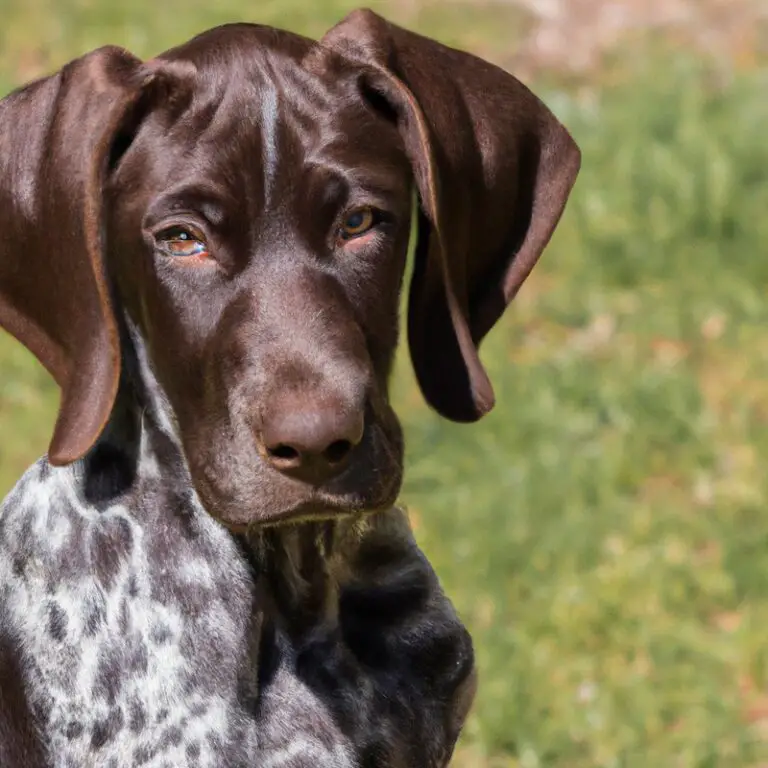Can a German Shorthaired Pointer Be Trained To Be a Lure Coursing Dog?
Key Takeaways:
- German Shorthaired Pointers can be trained to be successful lure coursing dogs.
- Proper training techniques can help GSPs excel in lure coursing events.
- Early socialization and consistent training are essential for a GSP’s success.
- GSPs’ natural instincts make them well-suited for lure coursing.
Have you ever seen a German Shorthaired Pointer in action? Their sleek physique, boundless energy, and natural athleticism make them perfect contenders for lure coursing.
But what exactly is lure coursing, and can this versatile breed be trained for it?
In this article, I’ll delve into the exhilarating sport of lure coursing and explore the history behind it. We’ll also discuss the characteristics and temperament of German Shorthaired Pointers that make them well-suited for this activity.
And fear not, because I’ll also provide practical tips and techniques to train your GSP to excel in the sport.
So, if you’re ready to take your four-legged companion on an exciting adventure, let’s dive into the world of lure coursing together!
| German Shorthaired Pointer | |
| Trainability | High |
| Instinct for Lure Coursing | High |
| Speed | Very Fast |
| Endurance | High |
| Size | Medium to Large |
| Temperament | Energetic and Affectionate |
| Training Requirements | Consistent and Dedicated |
| Potential as a Lure Coursing Dog | Very High |
The Basics of Lure Coursing
What is Lure Coursing?
Lure coursing is a thrilling dog sport that simulates the chase of prey in an open field. It’s like a game of tag for dogs! A mechanized lure, typically made of fur or plastic, is attached to a line and pulled across the course at high speeds.
Dogs, including German Shorthaired Pointers, are judged based on their speed, agility, and enthusiasm as they chase the lure.
It’s a great way to tap into their natural instincts and provide mental and physical exercise. Dogs of all breeds can participate and it’s a fun activity for both dogs and their owners!

History of Lure Coursing
Let’s dive into the exciting history of lure coursing! This thrilling sport has been around for centuries. It originated in Persia, where it was called “Coursing the Hare.” Nobles and hunters would release a hare, and their swift dogs would chase it across open fields.
During the Middle Ages, lure coursing gained popularity in Europe, particularly in England.
It became a favorite pastime of the aristocracy. The dogs used for coursing were primarily sighthounds like Greyhounds and Salukis, known for their speed and agility.
In the 19th century, lure coursing reached America.
Clubs were formed, and coursing events became more organized and regulated. Today, lure coursing competitions take place worldwide, showcasing the incredible athleticism of various dog breeds.
Lure coursing has evolved over time with the introduction of artificial lures, such as plastic bags or stuffed animals, to mimic the movements of a prey animal.
This allows dogs of different breeds and sizes to participate. So, next time you watch a lure coursing event, remember the long and rich history behind this thrilling sport.
It’s a testament to the incredible bond between humans and their four-legged companions throughout the ages.
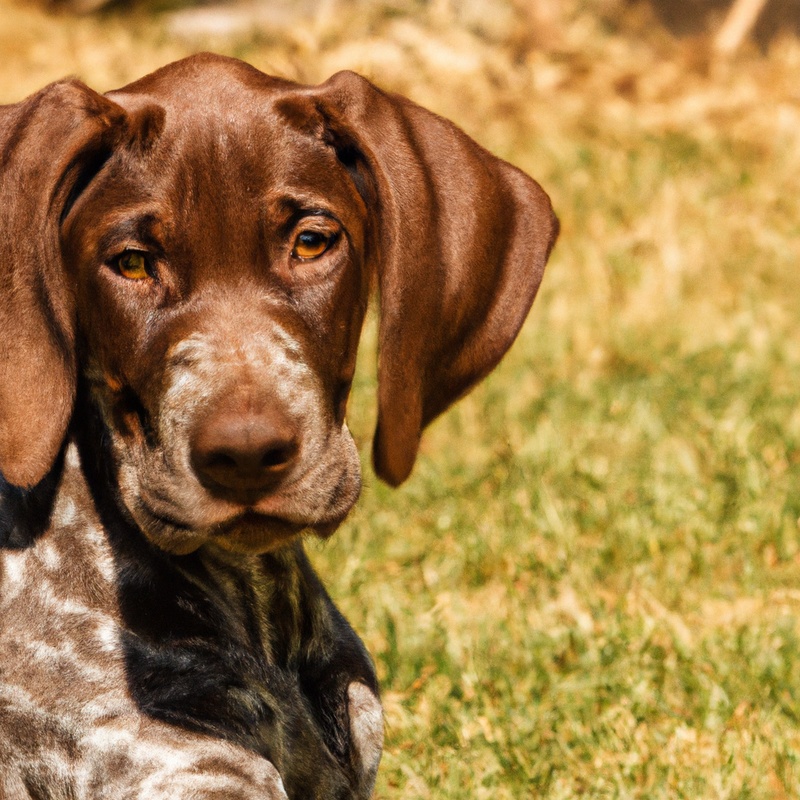
How Does Lure Coursing Work?
How does lure coursing work? Well, it’s a fast-paced and thrilling sport for dogs that taps into their natural hunting instincts.
In this exciting activity, dogs chase a mechanical lure, typically a plastic bag or a stuffed animal, that is attached to a line and pulled across a field or course.
The lure moves in a way that simulates the erratic movements of prey, triggering the dogs’ predatory drive. The dogs are judged on their speed, agility, and enthusiasm as they chase the lure, and it’s a fantastic way for them to release their energy and have a blast doing it!
German Shorthaired Pointers: A Versatile Breed
Characteristics and Temperament of German Shorthaired Pointers
Let’s talk about the characteristics and temperament of German Shorthaired Pointers. These dogs are known for their versatile nature and make excellent companions for active individuals or families.
First and foremost, German Shorthaired Pointers are highly energetic and require regular exercise to keep them happy.
They love to run, swim, and participate in various outdoor activities. So if you’re an active person, they can be a great fit for you.
These pointers are also intelligent and easy to train, which is a big plus.
They have a strong desire to please their owners, making them quick learners. With consistency and positive reinforcement, you can teach them a range of commands and tricks.
In terms of temperament, German Shorthaired Pointers are generally friendly and social.
They love being around people and are usually good with children. However, proper socialization from an early age is crucial to ensure they get along well with other dogs and pets.
It’s important to note that German Shorthaired Pointers have a strong prey drive due to their hunting background.
This means they may be inclined to chase small animals or birds. So if you have other small pets, it’s essential to introduce them cautiously and closely supervise their interactions.
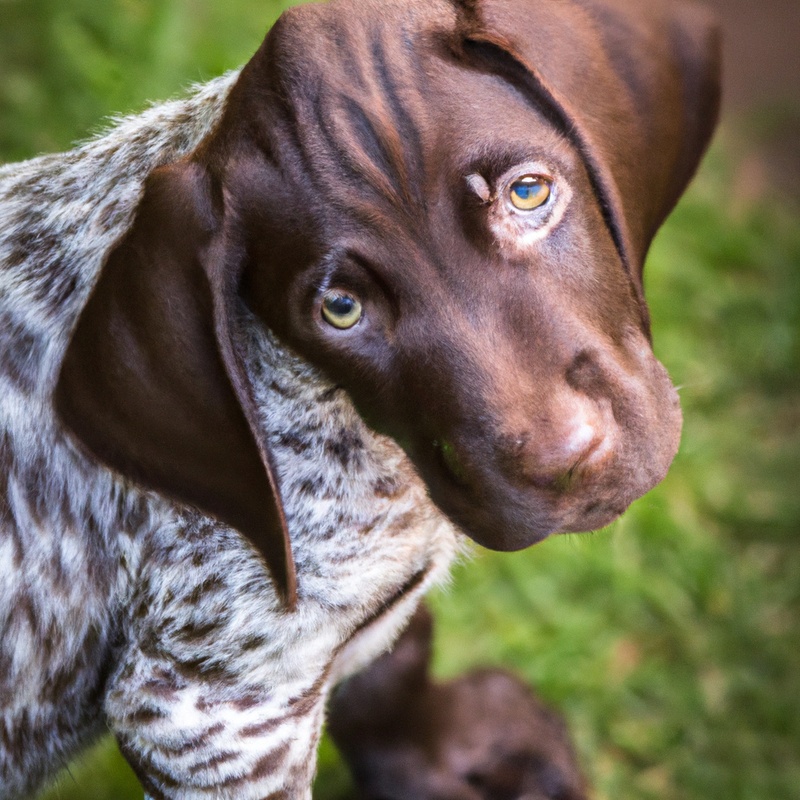
Training a German Shorthaired Pointer for Lure Coursing
Evaluating the Aptitude of Your German Shorthaired Pointer
Evaluating the aptitude of your German Shorthaired Pointer is an important step in determining their suitability for lure coursing. Firstly, consider their physical attributes.
This breed is known for their athleticism, speed, and endurance, which are crucial for success in lure coursing.
Assess their overall health and fitness levels to ensure they can handle the intense physical demands of the sport. Secondly, assess their prey drive.
A strong instinct to chase and capture prey is essential for lure coursing.
Observe how your German Shorthaired Pointer reacts to moving objects or animals. Do they display keen interest and excitement?
This is a good indication of their potential for lure coursing.
Lastly, evaluate their trainability and focus. Lure coursing requires dogs to follow complex patterns and instructions.
A German Shorthaired Pointer with a high level of trainability and the ability to maintain focus will have a greater chance of excelling in this sport.
Test their responsiveness to commands and their ability to concentrate on tasks.
Basic Training for Lure Coursing
Basic training for lure coursing is essential to ensure the safety and success of your German Shorthaired Pointer. First and foremost, focus on building a strong foundation of obedience commands such as sit, stay, and recall.
These commands will help you maintain control of your dog during lure coursing events.
Additionally, introduce your dog to the lure and familiarize them with the sight and movement of it. Practice short sprints and gradually increase the distance to build their endurance.
Remember to always use positive reinforcement and make training sessions fun and engaging for your dog.
Advanced Training Techniques for Lure Coursing
When it comes to advanced training techniques for lure coursing, there are a few key factors to keep in mind. First and foremost, it’s important to establish a strong foundation of basic obedience commands, such as sit, stay, and come.
This will provide a solid starting point for more complex training exercises.
Next, you’ll want to work on building your dog’s endurance and speed. Incorporating interval training and sprint exercises into your training routine can help improve their overall performance on the lure coursing field.
Additionally, introducing distractions during training sessions can help your dog stay focused and perform well in high-stress situations.
This can be done by incorporating objects or other animals into the training environment. Lastly, consider joining a lure coursing club or enlisting the help of an experienced trainer.
They can provide guidance, support, and expertise to help take your dog’s lure coursing training to the next level.
Tips and Considerations for Lure Coursing Training
Choosing the Right Equipment for Lure Coursing
Choosing the right equipment for lure coursing is an essential part of ensuring a successful and safe experience for both you and your dog. When it comes to selecting the equipment, there are a few key factors to consider.
Firstly, you’ll want to make sure you have a high-quality lure machine or a reliable lure pole.
This is what will simulate the prey for your dog to chase during the coursing session. It’s important to choose a lure machine or pole that can withstand rigorous use and is designed specifically for lure coursing.
Secondly, consider the type of lure that will be used.
Lures come in various forms such as plastic bags, fur pieces, or artificial animals. Each dog may have a different preference, so try out different lures to see what excites your dog the most.
Thirdly, think about the course design and setup.
You’ll need appropriate fencing to ensure the safety of both your dog and spectators. Additionally, consider the type of terrain you’ll be running your dog on and choose the right footwear to protect their paws.
By considering these factors and investing in the right equipment, you’ll be on your way to enjoying the exhilarating sport of lure coursing with your German Shorthaired Pointer or any other breed.
So, have fun and happy coursing!
Setting Up a Lure Coursing Course
Setting up a lure coursing course is crucial for training your German Shorthaired Pointer to be a successful lure coursing dog. Here are some tips to help you get started:
- Find a suitable location: Look for a flat, open area with enough space for the course. Ideally, it should be at least 200 yards long and have a clear path for the lure to follow.
- Get the right equipment: You will need a lure machine or a handheld lure, a lure line, and poles to mark the course. Make sure the lure line is securely anchored to avoid any accidents.
- Set up the course: Use the poles to mark the start and finish points. Space the poles evenly along the course to create a clear and safe path for your dog to follow. Make sure the course is free from any obstacles or hazards.
- Train safely: Always prioritize safety during training sessions. Keep the course well-maintained, regularly check the equipment for any damage, and use caution when operating the lure machine.
- Gradually increase difficulty: Start with a simple straight course and gradually introduce turns, curves, and obstacles as your dog becomes more experienced. This will keep them engaged and enhance their skills.
Safety Measures for Lure Coursing Training
Safety should always be a top priority when training your dog for lure coursing. Here are some key safety measures to keep in mind:
- Warm-up and cool-down: Just like athletes, dogs need to warm up and cool down before and after intense exercise. This helps prevent injuries and conditions their muscles. Take a few minutes to stretch and walk your dog before and after each session.
- Proper equipment: Make sure your dog is wearing a well-fitting harness or lure coursing collar. This will help prevent injury and provide better control during the training session. Avoid using a regular collar or leash, as it can be dangerous.
- Adequate hydration: Lure coursing is a demanding activity that can quickly dehydrate your dog. Always provide plenty of fresh water before, during, and after the training session. Stop the session if your dog shows signs of exhaustion or overheating.
- Suitable terrain: Choose a safe and appropriate training area for lure coursing. Avoid hard or slippery surfaces that can increase the risk of injury. If possible, use fenced-in areas to prevent your dog from running off.
- Regular breaks: Give your dog regular breaks during the training session. This allows them to rest, catch their breath, and avoid overexertion. Pay attention to any signs of fatigue or discomfort and adjust the training accordingly.
By following these safety measures, you can help ensure that your dog stays healthy and injury-free during lure coursing training.
Challenges and Common Issues in Lure Coursing Training
Overcoming Obstacles in Training
Overcoming obstacles in training can be challenging, but with the right approach and patience, you can achieve success. Here are a few tips to help you overcome common hurdles:
- Consistency is key: Regular and consistent training sessions are important to reinforce desired behaviors. Set aside dedicated time for training, and make sure everyone involved in the training process follows the same routines and rules.
- Use positive reinforcement: Reward your dog with treats, praise, or playtime when they exhibit the desired behavior. This positive reinforcement encourages them to repeat the behavior in the future.
- Break it down: Complex skills can be overwhelming for your dog. Break them down into smaller, manageable steps. Gradually build on progress to help your dog understand and succeed.
- Be patient and stay positive: Training takes time, and every dog learns at their own pace. Stay patient, calm, and positive throughout the process. Avoid getting frustrated or punishing your dog, as it can hinder learning and create a negative association.
- Seek professional help if needed: If you’re facing difficulties in training or feel overwhelmed, consider consulting a professional dog trainer. They can provide guidance, tailor the training approach to your dog’s needs, and offer solutions to overcome specific challenges.
Dealing with Distractions During Lure Coursing
When it comes to lure coursing, distractions can sometimes be a challenge. But fear not, there are ways to deal with them! First and foremost, it’s important to create a focused training environment.
Make sure to minimize any potential distractions, such as loud noises or other animals.
Another effective strategy is to gradually introduce distractions during training sessions. Start with small distractions and gradually increase their intensity.
This will help your German Shorthaired Pointer learn how to maintain their focus in the face of distractions.
Positive reinforcement is crucial in this process. Reward your dog for staying focused and ignoring distractions.
By incorporating treats and praise, you can reinforce the behavior you want to see.
Lastly, remember that patience is key. It may take time for your dog to master the art of ignoring distractions.
Be consistent in your training and celebrate every small victory along the way.
Addressing Behavioral Issues in Lure Coursing Training
Addressing behavioral issues in lure coursing training is an essential part of ensuring success and maintaining a safe and enjoyable experience for both the dog and the handler. One common behavioral issue is leash pulling.
It’s important to teach your German Shorthaired Pointer to walk nicely on a loose leash, as this will prevent them from pulling and potentially causing injury during the activity.
Another issue that may arise is prey drive. While it’s natural for dogs to have a strong prey drive, it’s crucial to teach them impulse control and to focus on the lure rather than getting distracted by other animals or objects.
Consistent training and positive reinforcement can help to address this issue and keep your dog on track during lure coursing.
Some dogs may also exhibit signs of fear or anxiety during the training process. This can be addressed by gradually introducing them to the lure coursing environment and providing plenty of positive experiences.
Creating a calm and supportive training environment and using rewards can help your dog develop confidence and overcome any fears.
Lastly, it’s important to address any issues of aggression towards other dogs or people. Proper socialization and training from an early age can help prevent aggression from developing.
If aggression is already present, it’s crucial to seek professional help to address and manage the issue effectively.
Participating in Lure Coursing Events with a German Shorthaired Pointer
Finding Lure Coursing Events and Organizations
Finding lure coursing events and organizations can be an exciting process that allows you to explore this thrilling sport with your German Shorthaired Pointer. Here are a few ways to discover these events and connect with the right organizations:
- Online Research: Start by conducting a simple web search for lure coursing events in your area. Look for websites or social media pages dedicated to lure coursing, as they often provide information on upcoming events and organizations involved in the sport.
- Local Kennel Clubs: Check with local kennel clubs or dog training organizations in your area. They may host lure coursing events or have information on nearby events and organizations.
- Breed-Specific Clubs: German Shorthaired Pointer clubs and organizations are a great resource for finding lure coursing events. Reach out to them and inquire about any upcoming events or associations that specialize in this particular breed.
- Attend Dog Shows: Dog shows often feature lure coursing demonstrations or even competitions. This can be an excellent opportunity to learn about upcoming events and connect with organizations involved in lure coursing.
- Online Forums and Groups: Join online forums and social media groups dedicated to German Shorthaired Pointers or lure coursing. Fellow enthusiasts can provide valuable information and recommendations on events and organizations in your area.
Rules and Regulations for Lure Coursing Competitions
When it comes to participating in lure coursing competitions, it’s important to familiarize yourself with the rules and regulations. Here are some key points to keep in mind:
- Dog Eligibility: Only sighthound breeds or mixed breeds with significant sighthound heritage are typically allowed to compete in lure coursing events. German Shorthaired Pointers may be eligible depending on the specific competition’s rules.
- Course Setup: The lure coursing course is usually a large open field with a series of turns and obstacles. The course should be designed to simulate the chase of live game. It’s crucial for the course to be safe and well-maintained.
- Lure System: A lure, typically a plastic bag or a piece of white cloth, is attached to a pulley system and pulled across the course at high speed to mimic the movement of prey. The lure should follow a natural pattern and be enticing for the dogs.
- Scoring: Dogs are evaluated based on their performance, including speed, agility, endurance, enthusiasm, and ability to follow the lure. Lure coursing competitions often have different classes based on breed, age, or skill level.
- Safety Measures: Safety is paramount in lure coursing. Dogs must be in good health and free from any physical conditions that could put them or other dogs at risk. Adequate supervision, protective gear, and first aid resources should be available at all times.
Preparing for a Lure Coursing Event with Your German Shorthaired Pointer
Preparing for a Lure Coursing Event with Your German Shorthaired Pointer is an exciting opportunity for you and your furry friend to have some fun and showcase their natural ability and instincts. Here are a few things to keep in mind to ensure you’re ready for the event.
Firstly, it’s important to ensure that your German Shorthaired Pointer is in good physical condition.
Regular exercise and proper nutrition are crucial in maintaining their health and stamina. Gradually increase their exercise routine leading up to the event to build their endurance.
Secondly, familiarize yourself and your dog with the lure coursing rules and regulations.
Each event may have specific guidelines that you need to follow. Knowing these beforehand will help you navigate the course effectively and prevent any disqualifications.
Next, practice with your German Shorthaired Pointer using a lure coursing machine or a makeshift system that mimics the movement of the lure.
This will help them become accustomed to the chase and improve their focus and speed. Furthermore, consider getting your dog a racing muzzle.
This will ensure their safety and the safety of other participants during the event.
Lastly, don’t forget to pack the essentials for the event, such as water, treats, and any necessary paperwork required by the organizers. With these preparations in place, you and your German Shorthaired Pointer will be ready to tackle the lure coursing event and have a fantastic time together.
Good luck and have fun!
Alternative Activities for German Shorthaired Pointers
Agility Training
When it comes to agility training for German Shorthaired Pointers, there are a few key points to keep in mind. First and foremost, patience and consistency are crucial.
These dogs are smart and enthusiastic, but they also have a lot of energy.
Make sure to start with basic commands like sit, stay, and come, and gradually introduce more advanced exercises. Incorporating agility equipment such as jumps, tunnels, and weave poles can be a great way to keep your GSP engaged and mentally stimulated.
Remember to always use positive reinforcement, like treats and praise, to motivate your dog and make the training experience enjoyable for both of you.
Lastly, don’t forget to warm up and cool down before each training session to prevent injuries. Take it slow and gradually increase the difficulty level as your GSP becomes more comfortable and confident.
With time, practice, and lots of fun, your German Shorthaired Pointer can become a skilled agility dog!
Field Trials
Field trials are a popular activity for German Shorthaired Pointers. These trials showcase the breed’s natural hunting abilities and allow dogs and their owners to compete in a controlled environment.
The aim of field trials is to evaluate a dog’s performance in hunting scenarios, such as finding and pointing game birds.
Dogs are judged on their ability to locate and point game, as well as their obedience and handling skills. Participating in field trials can be a great way to bond with your German Shorthaired Pointer and demonstrate their natural talents.
Dock Diving
Dock diving is a thrilling and athletic activity that German Shorthaired Pointers can excel in. It involves jumping from a platform or dock into a pool of water, showcasing their impressive jumping and swimming skills.
With their natural athleticism and love for water, German Shorthaired Pointers are well-suited for this sport.
Dock diving provides an excellent outlet for their energy and instincts while also strengthening their muscles and improving their overall fitness. It’s a fun and engaging activity that both you and your furry friend can enjoy together.
So, grab your GSP and get ready to make a splash!
Final Verdict
German Shorthaired Pointers can indeed be trained to be successful lure coursing dogs. With their natural athleticism, intelligence, and drive, they are well-suited for this sport.
By evaluating their aptitude, providing basic and advanced training, and following proper safety measures, you can prepare your German Shorthaired Pointer for lure coursing competitions.
It is important to choose the right equipment, set up a suitable course, and address any challenges or behavioral issues that may arise. By participating in lure coursing events, you can showcase your dog’s abilities and enjoy this exciting activity together.
Additionally, alternative activities like agility training, field trials, and dock diving can provide additional outlets for their energy.
Remember, with patience, dedication, and proper training, your German Shorthaired Pointer can excel in lure coursing and other activities, forming a strong bond and achieving new heights of performance.


